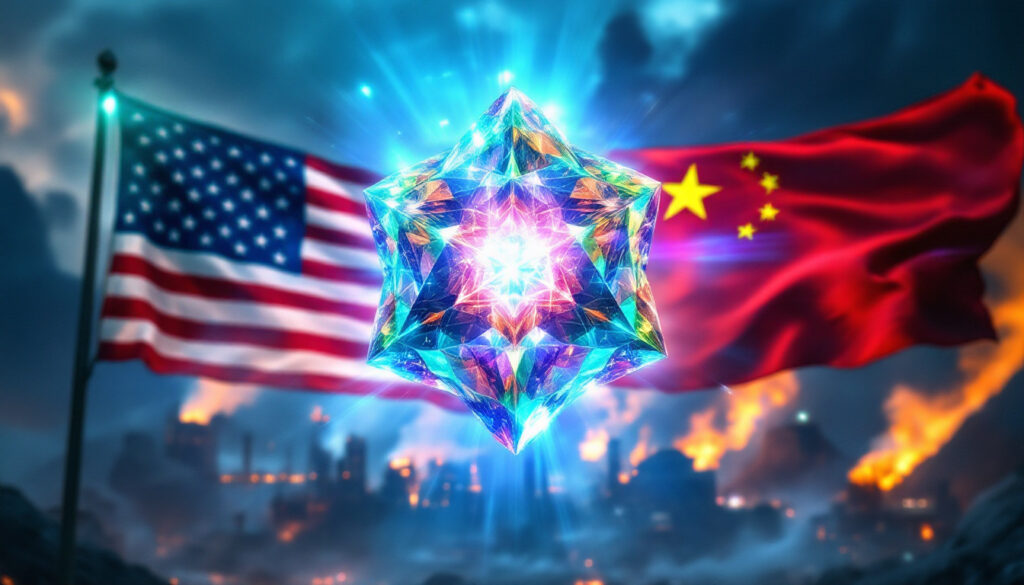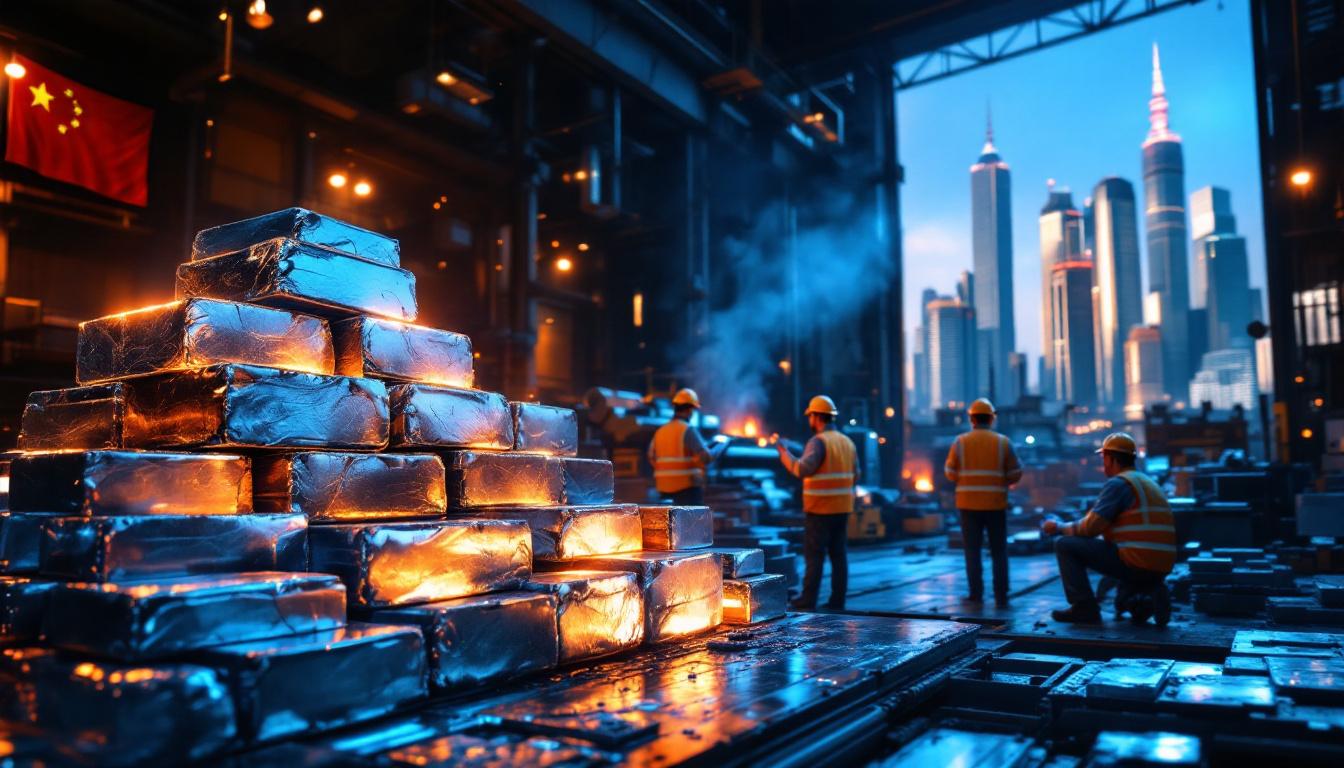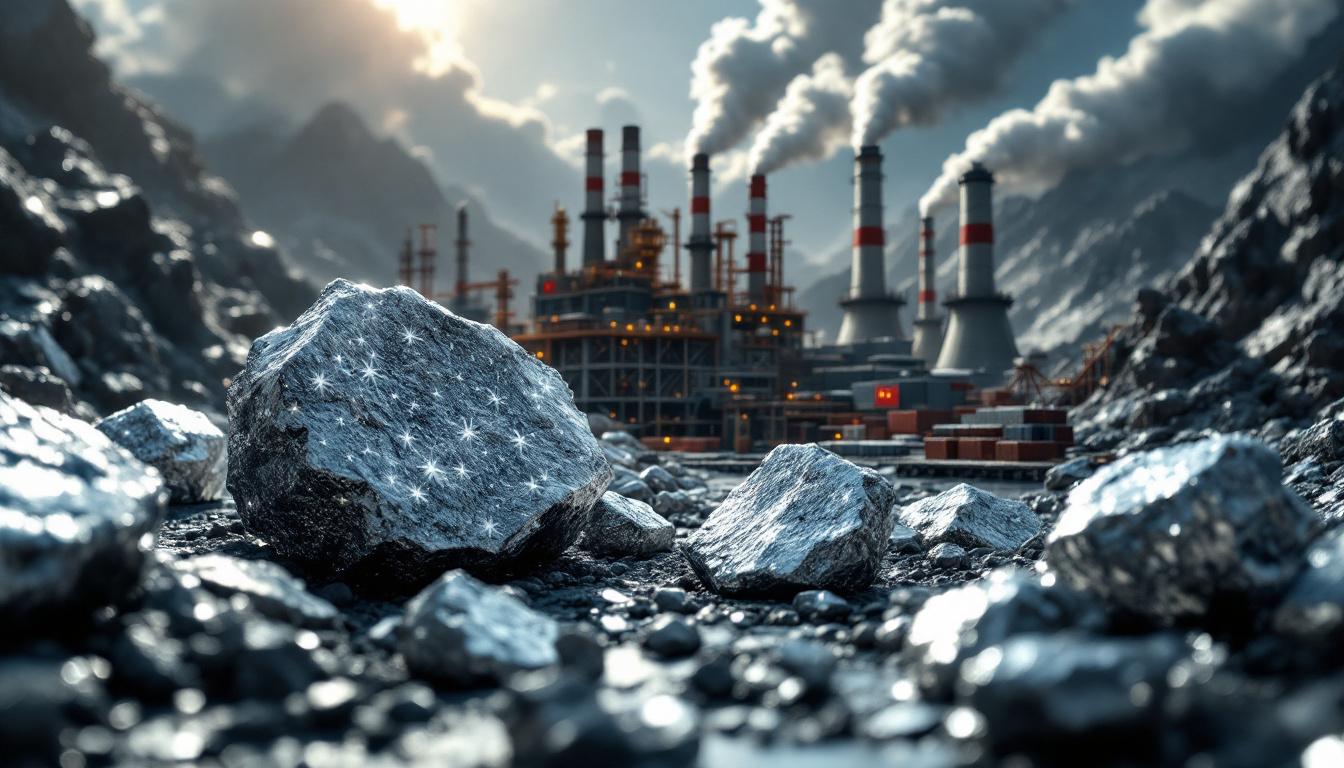How Are US-China Rare Earth Trade Relations Changing?
The landscape of rare earth trade between the United States and China has undergone significant transformation in recent years, with tensions escalating dramatically in 2025. On April 17, 2025, MP Materials, which operates the only rare earth mine in the United States at Mountain Pass, California, halted all shipments of rare earth raw concentrate to China. This decision came in direct response to China's imposition of substantial 125% retaliatory tariffs on US rare earth imports.
These developments represent the latest moves in an increasingly strategic battle over critical mineral shortages. In a countermeasure that further raised stakes, Beijing added seven rare earth metals to its export control list in April 2025, signaling its willingness to leverage its dominant position in the global supply chain.
Statistical trends confirm a gradual decoupling between the two powers in the rare earth sector. US-China rare earth trade has been steadily declining, with a 13.7% decrease recorded in 2023, followed by a more pronounced 16.9% decrease in 2024. These figures indicate a deliberate shift away from interdependence in this strategic sector.
Understanding the Strategic Importance of Rare Earths
Rare earth elements comprise a group of 17 metals with unique properties that make them irreplaceable in manufacturing high-strength permanent magnets. Despite their name, most of these elements are relatively abundant in the Earth's crust, but they rarely occur in economically viable concentrations.
These specialized magnets are essential components in electric vehicles, wind turbines, smartphones, defense systems, and countless other advanced technologies. A single F-35 fighter jet, for instance, requires approximately 920 pounds of rare earth materials for various components.
China currently dominates global rare earth processing capabilities, controlling approximately 90% of the world's refining capacity. This position gives Beijing significant leverage in global commodities insights, despite efforts by other nations to develop alternative sources.
While MP Materials operates the only active rare earth mine in the United States, the company has historically shipped most of its concentrate to China for processing. This arrangement highlights the complexity of global rare earth supply chains and the challenges facing countries seeking to reduce dependence on Chinese processing.
Why Is Shenghe Resources Unconcerned About MP Materials' Export Halt?
Despite the potential disruption caused by MP Materials' export halt, Chinese rare earth processor Shenghe Resources has expressed remarkable confidence in its ability to weather the storm. The company released a statement confirming its "diversified supply channel of rare earth raw materials," highlighting a strategic approach to supply chain management that has been years in the making.
"We have built a diversified supply channel of rare earth raw materials, with supply from Sichuan and other countries as well as monazite used as alternatives," the company stated, demonstrating its proactive stance on supply security.
Shenghe's Supply Chain Diversification Strategy
Shenghe's confidence stems from its multi-faceted approach to sourcing. The company has significantly expanded its domestic supply operations in Sichuan province, which is estimated to hold approximately 3.2 million tons of rare earth reserves insights. These reserves serve as a critical buffer against international supply disruptions.
Beyond domestic resources, Shenghe has actively cultivated international sources beyond the United States. In 2023-2024, the company increased purchases from alternative suppliers in Myanmar and Vietnam by approximately 34%, strategically offsetting reductions in US supply well before the current crisis.
Perhaps most significantly, Shenghe has embraced monazite, a phosphate mineral containing rare earth elements, as an alternative source. The company has optimized its monazite processing technology to achieve impressive 95% recovery rates for critical elements like neodymium, demonstrating technological adaptability that further insulates it from supply shocks.
Ongoing Business Relationship with MP Materials
Surprisingly, the supply contract between Shenghe and MP Materials remains valid despite the export halt. The companies renewed their offtake agreement in January 2024 through Shenghe's Singapore subsidiary, establishing a framework that continues to govern their relationship even amid escalating trade tensions.
"The supply contract with MP is still valid," Shenghe confirmed in its statement, suggesting potential flexibility in how the agreement might be implemented going forward.
This current agreement is effective for two years with a potential one-year extension, providing a structured timeframe for ongoing negotiations. The Singapore-based subsidiary potentially provides a strategic workaround to direct China-US trade restrictions, leveraging ASEAN trade agreements to bypass tariffs while maintaining approximately 20% cost savings on logistics.
What Are the Broader Implications for Global Rare Earth Supply Chains?
The current tensions between the US and China over rare earth trade highlight fundamental shifts in global supply chains for these critical materials. As both countries implement restrictive measures, the ripple effects extend far beyond their bilateral relationship.
China's Strategic Position in Rare Earth Processing
China maintains its dominant position in rare earth refining despite some import dependence. Chinese processors control approximately 70% of global output, compared to the United States' modest 15%. This processing advantage stems from decades of investment in proprietary hydrometallurgical refining techniques that lower production costs by roughly 40% compared to Western methods.
Chinese processors like Shenghe have been systematically preparing for supply chain disruptions, implementing redundancy strategies that incorporate both domestic and international alternatives. This preparedness reflects China's long-term geopolitical investment strategies to critical minerals, contrasting with more reactive policies in other countries.
Domestic Chinese rare earth production serves as a substantial buffer against import restrictions. While China imports some concentrate to supplement its needs, the country's extensive internal resources provide significant self-sufficiency, particularly for light rare earth elements where it maintains approximately 80% self-sufficiency.
International partnerships beyond the US provide alternative supply channels that further enhance China's resilience. These relationships span multiple continents and include both established mining operations and exploratory projects in development.
Impact on US Rare Earth Strategy
MP Materials now faces serious challenges in finding alternative buyers for its concentrate. The company's stockpile of approximately 50,000 tons of stranded concentrate represents a substantial financial risk, potentially jeopardizing around $200 million in annual revenue.
US efforts to develop domestic rare earth processing capabilities have become increasingly urgent in light of recent developments. Several projects are underway, but significant gaps remain in the processing infrastructure required to handle the full rare earth value chain.
The current administration's approach to critical minerals will likely require adjustment in response to China export restrictions. Past policies focused primarily on mining rather than processing capability have left vulnerabilities that are now being exposed.
Industry analysts from Adamas Intelligence note that "China's export controls will accelerate EU/US efforts to build independent supply chains by 2030," suggesting that current tensions could ultimately catalyze development of more resilient Western supply networks.
How Does This Fit Into Broader US-China Trade Tensions?
The rare earth dispute represents just one facet of increasingly complex trade relations between the world's two largest economies. The strategic importance of these materials elevates their significance beyond mere commercial considerations.
Escalating Trade Measures
China's 125% tariffs on US rare earth imports represent a significant escalation in trade measures. These tariffs effectively close the Chinese market to American producers, forcing fundamental changes in established business models.
The export controls on rare earth materials demonstrate China's willingness to use resource leverage as a strategic tool. This approach mirrors China's 2010 rare earth embargo, which caused approximately 400% price spikes in global markets and prompted widespread concerns about supply security.
Both countries are increasingly using critical minerals as strategic trade tools rather than purely economic assets. This shift reflects a broader recognition of the national security implications of mineral supply chains, particularly for technologies with both civilian and military applications.
Tensions extend beyond rare earths to other critical minerals including lithium, cobalt, and graphite, creating a complex matrix of trade restrictions and counter-measures. The cumulative impact has reduced rare earth trade volume by approximately $1.2 billion annually since 2023.
Global Supply Chain Implications
As trade tensions between the US and China intensify, other countries may benefit as alternative suppliers to both markets. Australia, through its partnership with Lynas Corporation, already supplies approximately 12% of global demand, emerging as a significant non-Chinese source.
Companies worldwide are reassessing supply chain vulnerabilities in light of recent developments. Major manufacturers are increasingly requiring suppliers to demonstrate resilience planning that accounts for geopolitical disruptions.
The European Union has allocated approximately €4 billion to develop rare earth projects under its Critical Minerals Act, reflecting increased focus on developing processing capabilities outside China. These investments aim to establish European self-sufficiency in critical minerals by 2030.
Security analysts from the Center for Strategic and International Studies (CSIS) observe that "rare earths are the new 'choke point' in tech warfare, with China weaponizing supply chains." This assessment highlights how mineral resources have become central to broader technological competition between major powers.
FAQ About Chinese Rare Earth Processors and US Feedstock
What are rare earth elements and why are they important?
Rare earth elements are a group of 17 metals critical for manufacturing permanent magnets that convert power into motion for electric vehicles, cell phones, and other electronics. Despite their name, most rare earths are relatively abundant in the Earth's crust, but economically viable concentrations are less common. Their unique properties make them essential for technologies ranging from renewable energy to advanced defense systems.
How dependent is China on US rare earth imports?
While China dominates global rare earth processing, it does import some concentrate from other countries, including the US. However, these imports have been declining, with a 13.7% decrease in 2023 and a 16.9% decrease in 2024, suggesting China has been systematically reducing its reliance on US sources. China maintains significant domestic production capability, particularly through operations in regions like Sichuan province.
What alternatives does Shenghe have to US rare earth imports?
Shenghe Resources has developed a sophisticated, diversified supply chain that includes domestic sources from Sichuan province, imports from other countries including Myanmar and Vietnam, and alternative materials like monazite. This diversification strategy has positioned the company to withstand disruptions in US supply. The company's technological innovations in processing alternative feedstocks further enhance its resilience.
What is the current state of the MP Materials-Shenghe relationship?
Despite the halt in shipments, the supply contract between MP Materials and Shenghe remains valid. The companies renewed their offtake agreement in January 2024 through Shenghe's Singapore subsidiary, with the agreement set to last for two years and potentially extend for an additional year. This arrangement potentially provides a framework for future cooperation despite current tensions, possibly utilizing the Singapore entity as an intermediary.
How are export controls affecting the global rare earth market?
China's addition of seven rare earth metals to its export control list represents a significant development in the global market. These controls require dual-use certifications for shipments, typically delaying exports by approximately 45 days. Combined with retaliatory tariffs, these measures are reshaping global trade flows and encouraging companies worldwide to develop alternative supply chains and processing capabilities, accelerating diversification efforts already underway in Europe and North America.
Ready to Stay Ahead of Critical Mineral Trading Shifts?
Get real-time alerts on significant ASX mineral discoveries, including rare earth developments, through Discovery Alert's proprietary Discovery IQ model. Explore how major mineral discoveries can lead to substantial market returns by visiting our dedicated discoveries page and begin your 30-day free trial today.




